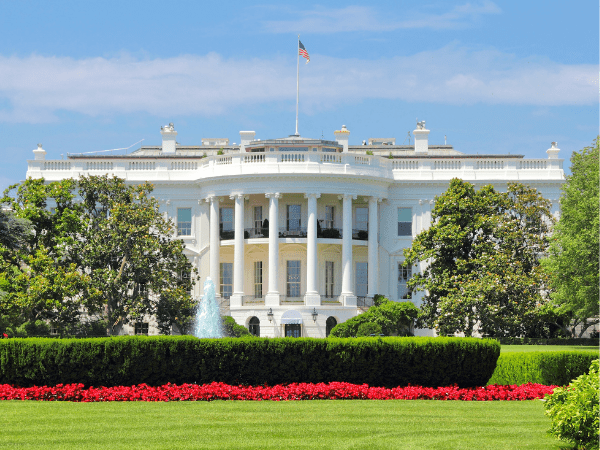July 7, 2025
Overview
On July 5, 2025, President Donald Trump signed the One Big Beautiful Bill Act (“OBBBA”) into law, cementing months of Congressional budgetary bartering, and overcoming significant resistance from House and Senate minority Democrats. While the law primarily relates to budgetary concerns for the military, law enforcement, agriculture, international taxation, and certain corporate taxation requirements, there are several significant provisions related to healthcare, employment, and generalized individual taxation.
Of particular significance to employers, the law offers continuation of certain COVID-era telehealth flexibilities related to high deductible health plan/health savings account (“HDHP/HSA”) interactions, expands the annual deferral limits for qualifying dependent care assistance plans (“DCAPs”), permits payment of direct primary care arrangement fees via a qualifying HSA and makes such coverage non-HSA disqualifying, extends tax credits associated with employer-provided student loan repayment assistance, extends the employer-provided paid leave tax credit, imposes a temporary tax credit associated with tips and compensation paid for overtime, and permits bronze-level and catastrophic plan enrollments to be treated as HDHP enrollments for purposes of HSA contribution activities by the enrolled individual and their employer.
These taxation and budgetary related issues are discussed in greater detail in the following sections of this alert. We will continue to monitor how cuts to Medicaid (and other social safety net programs) and limits on Exchange enrollment and subsidies in the law may impact employers and employer-sponsored group health plans.
Employer Action Items
- Telehealth Services Coordination with HSA/HDHP Arrangements: Employers should consider amending their HSA compatible HDHPs to allow first-dollar coverage of telehealth and other remote care options. Prospective amendment remains the most practical approach, but the change is effective beginning in 2025.
- Expansion & Indexing of DCAP Annual Limits: Employers should prepare to increase DCAP election limits to $7,500 in Cafeteria Plan Documents and open enrollment communications for 2026 plan years.
- Direct Primary Care Arrangement Interactions with HSAs: Employers should consider amending their HSA compatible HDHPs to allow first-dollar coverage of Direct Primary Care Arrangements that meet the requirements of the law (however, proposed or final regulations are yet to be published). Employers should consider adding such an arrangement if HSA compatibility was a deterring concern.
- Employer-Provided Student Loan Payments: Employers with existing tax favored student loan repayment programs should amend plan documents to reflect that tax favored status has been permanently extended. Employers should consider adding a student loan repayment plan to their benefits offering now that tax favored status is permanent.
- Employer Paid Leave Tax Credit: Employers with existing policies allowing them to claim the Paid Family and Medical Leave tax credit should consider extending those policies on a permanent basis. Employers should consider adding a compliant Paid Family and Medical Leave policy to take advantage of this tax credit.
- Temporary Reduction of Taxes Associated with Overtime and Tips: Employers should work with their payroll and tax advisors to eliminate taxes on tips and overtime pay for the next three years (2025 through 2028). Employers should explore whether they can retroactively reverse taxes paid during 2025 before enactment of the law.
Summary
The OBBBA provides limited relief for employers and their employees, namely in the way of a light dusting of targeted employee benefit and executive compensation provisions. Otherwise, the law offers little in the way of substantive reform or an expansion of tax-related benefits for employer plan sponsors. The law’s substantive provisions in the taxation, healthcare, and employee benefits areas, are detailed in the following chart:
|
Taxation, Healthcare, and Employment Related Provisions of the OBBBA (2025) |
||
|
Topic |
Section |
Requirement |
|
Individual Income Tax Rates |
70101 |
The OBBBA makes permanent the Tax Cuts and Jobs Act (“TCJA”) income tax rates, including the 37% top individual income tax rate. |
|
Itemized Deduction Limitation |
70111 |
The law makes permanent the repeal of the Pease limitation on itemized deductions; however, the OBBBA imposes a new limitation on itemized deductions for taxpayers in the 37% income tax bracket (effective beginning in 2026). |
|
Standard Deduction |
70102 |
The law temporarily boosts standard deduction amounts. For tax years 2025 through 2028, the amounts increase $2,000 for married couples filing jointly, $1,500 for heads of households and $1,000 for single filers. For seniors aged 65 or older who meet certain income limits, an additional standard deduction of $4,000 is now available. Under current law, the inflation-adjusted standard deduction amounts for 2025 are $30,000 for joint filers, $22,500 for heads of households and $15,000 for singles. |
|
Child Tax Credit (“CTC”) |
70405 |
Under current law, the $2,000 per child CTC is set to drop to $1,000 after 2025. The income phaseout thresholds are also lower. The requirement to provide a child’s Social Security number (“SSN”) was also eliminated. The OBBBA makes the CTC permanent, raises it to $2,500 per child for tax years 2025 through 2028, and retains the higher income phaseout thresholds. It preserves the requirement to provide a child’s SSN and expands the requirements to provide that an SSN for the taxpayer (generally the parent) claiming the credit must be provided. After 2028, the CTC returns to $2,000 and will be adjusted annually for inflation. |
|
State and Local Tax (“SALT”) Deduction |
70120 |
The OBBBA increases the TCJA’s SALT deduction cap (which is currently set to expire after 2025) from $10,000 to $40,000 for 2025. The limitation phases out for taxpayers with incomes over $500,000. After 2025, the cap increases by 1% annually through 2033. |
|
Miscellaneous Itemized Deductions |
70110 |
Through 2025, the TCJA suspended deductions subject to the 2% of adjusted gross income (“AGI”) floor, such as certain professional fees and unreimbursed employee business expenses. This means, for example, that employees can’t deduct their home office expenses, moving expenses, meals, and entertainment expenses. The OBBBA makes the suspension permanent. |
|
Federal Gift and Estate Tax Exemption |
70106 |
Beginning in 2026, the bill increases the federal gift and estate tax exemption to $15 million. This amount is permanent but will be annually adjusted for inflation. For 2025, the exemption amount is $13.99 million. |
|
Temporary Deduction on Taxes for Overtime |
70202 |
The OBBBA provides a temporary above-the-line deduction for qualified overtime compensation earned between tax years 2025 and 2028. Under the proposal, overtime pay is exempt from federal income tax up to $12,500 for individuals and $25,000 for married couples filing jointly. The deduction phases out for taxpayers with modified adjusted gross income (“MAGI”) over $150,000 (individuals) or $300,000 (joint filers). Qualified overtime compensation is defined as overtime pay mandated by the Fair Labor Standards Act (“FLSA”) that exceeds the employee’s regular rate of pay. Finally, payroll taxes for Social Security and Medicare continue to apply to overtime payments. |
|
Temporary Deduction on Taxes for Tips |
70201 |
The OBBBA establishes a temporary above-the-line deduction of up to $25,000 for qualified tips received by individuals working in occupations where tipping is customary and regular. The deduction is available to employees who receive a Form W-2 as well as independent contractors who receive Form 1099-K, Form 1099-NEC, or who report tips on Form 4317 (Social Security and Medicare Tax on Unreported Tip Income). The benefit begins to phase out for taxpayers with modified adjusted gross income (“MAGI”) over $150,000 ($300,000 for joint filers). The deduction applies to tax years 2025 through 2028. This provision takes effect for taxable years starting after December 31, 2024, and expires for taxable years beginning after December 31, 2028. |
|
Executive Compensation |
70603 |
The OBBBA adds an entity aggregation rule to Section 162(m). Under this provision, compensation paid to a specified covered employee by any member of a controlled group must be combined to determine whether the $1 million deduction limit has been exceeded. The allowable deduction is then allocated among all members of the controlled group that paid compensation to that employee. This provision would apply to tax years beginning after December 31, 2025. |
|
Permanent Exclusion for Employer-Provided Student Loan Assistance and Inflation Adjustment |
70412 |
The law makes permanent COVID-era relief allowing employees to exclude up to $5,250 per year from gross income for employer-provided student loan repayment. Employers can also exclude these amounts from wages for employment tax purposes. Starting in tax year 2027, the $5,250 annual exclusion limit for Section 127 benefits (including education assistance and student loan payments) is be indexed for inflation. |
|
Permanent Increase to ABLE Account Contribution Limits |
70115-70117 |
Employed individuals with disabilities may contribute extra funds to ABLE accounts, up to the lesser of their annual earnings or the federal poverty level for a single-person household. The law permanently extends this higher contribution limit and adds one additional year of inflation adjustments to the contribution threshold. |
|
Dependent Care Assistance Programs |
70405 |
The law codifies adjustments to the annual deferral limits for dependent care assistance plans (“DCAP”). In 1986, Congress established a non-indexed limit of $5,000 for dependent care benefits offered by an employer. The OBBBA raises the limit for plan years beginning on or after January 1, 2026, to $7,500 ($3,750 for those who are married filing separately). This new limit is not indexed. |
|
Bronze and Catastrophic Exchange-Based Plans are Now Eligible as HDHPs |
71307 |
By permitting Bronze-level and catastrophic plans that are available on a state- or the federal Exchange to be treated as HDHPs, enrollees may receive employer and/or employee HSA contributions, as long as such individuals are: § Enrolled in that plan; § Not enrolled in Medicare Part A; § Not enrolled in a disqualified plan; and § Not claimed as a dependent on another’s current-year tax return. |
|
Telehealth Services Received Prior to Satisfaction of High Deductible Health Plan’s Deductible |
71306 |
First-dollar telehealth coverage was reinstated and made permanent beginning with plan years after December 31, 2024. The OBBBA extends first-dollar telehealth and other remote coverage options to HDHPs, even if the cause of the telehealth visit is not preventive, without causing a loss of the ability of an employer or employee to contribute to a Health Savings Account. |
|
Treatment of Direct Primary Care Arrangements |
71308 |
Beginning in 2026, direct primary care arrangements are not HSA disqualifying coverage and fees related to participation in a direct primary care arrangement are treated as tax-qualified medical expenses for purposes of an HSA, up to a maximum of $150 per month for individual coverage (and up to $300 per month for coverage of more than one individual). For purposes of this provision, the term “primary care services” excludes: § Procedures that require the use of general anesthesia; § Prescription drugs (other than vaccines); and, § Laboratory services not typically administered in an ambulatory primary care setting. |
|
Deduction for Certain Commuter Expenses |
70112 |
This provision permanently terminates the deduction associated with bicycle commuting expenses. |
|
Extension of the Paid Family and Medical Leave Tax Credit |
70304 |
This provision extends the general business tax credit employers may claim, based on wages paid to qualifying employees while they are on family and medical leave, subject to certain conditions. The tax credit was originally COVID-era relief expiring December 31, 2025. |
It is important to note that other cuts in the OBBBA potentially burden the private insurance industry, reduce financial payments and other incentives for hospitals, dramatically reduce Medicare and Medicaid spending (generally, under the rationale of limiting “fraud, waste, and abuse”), and establish new restrictions and substantive reductions applicable to healthcare coverage underwritten via the public health insurance marketplace and the state-based insurance Exchanges. Although the passage of this legislation represents a significant political win for Donald Trump, it remains to be seen whether citizens will embrace the reformative measures in the bill targeting American safety-net programs. Midterm elections will gauge to what extent the country supports the Administration’s public policy objectives advanced by the law. Several significant rollbacks from the law are detailed below:
- Medicaid Rollbacks and New Regulation: There will be nearly 8.7 million fewer people covered by Medicaid over the next decade because of the bill’s stringent recertification requirements, newly-imposed “community engagement requirements” (work requirements requiring “able-bodied adults” to work a minimum of eighty (80) hours per month to receive benefits), and other enrollment-limiting mechanisms.
- ACA Rollbacks and New Regulation: More stringent requirements for people to enroll and retain health-insurance plans under the Affordable Care Act (“ACA”) are projected to drive up the number of uninsured by at least an additional 5.1 million individuals, largely due to the forthcoming expiration of the ACA’s enhanced enrollment subsidies.
- Hospital-Related Outcomes: Hospitals are likely to experience dramatic revenue reductions with the passage of the OBBBA. Medicaid payments to hospitals will be reduced by nearly $665 billion, an 18.2% reduction. Meanwhile, hospitals’ uncompensated care costs are projected to increase by upward of $84 billion in 2034. That number considers both lower Medicaid payments and Medicaid payment shortfalls, as well as costs from caring for the uninsured. Further exacerbating the actual loss of hospital revenue implicated under the OBBBA, the loss of coverage caused by the Medicaid and ACA rollbacks will likely result in many Americans delaying or foregoing preventive or intermediate care, resulting in an influx of emergency room and general hospital admissions for under- or uninsured Americans.
- Impacts for Insurance Industry Partners: For insurance issuers, the loss of Medicaid and ACA enrollees will likely result in the healthiest individuals losing coverage first (largely electively so); however, this leaves a sicker, more costly pool of customers for insurers, who then seek to get paid more to cover those expenses. Compounding this issue, many Americans enrolled in Medicaid and in the ACA Exchanges will lose their coverage – coverage that is underwritten by some of the largest private insurance companies in America. Consequently, insurance issuers are likely to experience dramatic reductions in enrollment and associated revenue, requiring organizational reallocation, and potentially reformulation of revenue streams.
Note that the Congressional Budget Office, a nonpartisan group responsible for scoring the budget, projects that the law will increase federal deficits over the next 10 years by nearly $3.3 trillion.
Additional Information & Related Resources
Full text – One Big Beautiful Bill Act:
Updates and implementation of the OBBBA from the White House:
Access our on-demand webcast
For questions regarding this alert or any other related compliance issues, please contact your Baldwin Group advisor.
Thank you for your time.
Kindest regards,
Baldwin Regulatory Compliance Collaborative
For more information
We’re ready when you are. Get in touch and a friendly, knowledgeable Baldwin advisor is prepared to discuss your business or individual needs, ask a few questions to get the full picture, and make a plan to follow up.
This document is intended for general information purposes only and should not be construed as advice or opinions on any specific facts or circumstances. The content of this document is made available on an “as is” basis, without warranty of any kind. The Baldwin Insurance Group Holdings, LLC (“The Baldwin Group”), its affiliates, and subsidiaries do not guarantee that this information is, or can be relied on for, compliance with any law or regulation, assurance against preventable losses, or freedom from legal liability. This publication is not intended to be legal, underwriting, or any other type of professional advice. The Baldwin Group does not guarantee any particular outcome and makes no commitment to update any information herein or remove any items that are no longer accurate or complete. Furthermore, The Baldwin Group does not assume any liability to any person or organization for loss or damage caused by or resulting from any reliance placed on that content. Persons requiring advice should always consult an independent adviser.
The Baldwin Group offers insurance services through one or more of its insurance licensed entities. Each of the entities may be known by one or more of the logos displayed; all insurance commerce is only conducted through The Baldwin Group insurance licensed entities. This material is not an offer to sell insurance.






